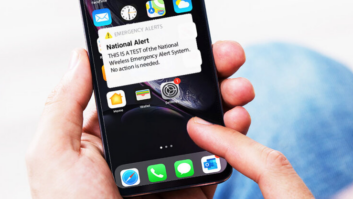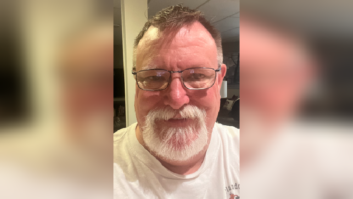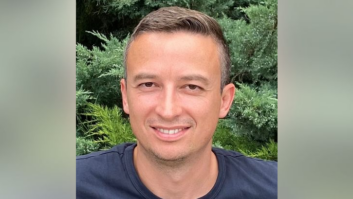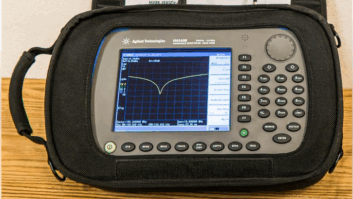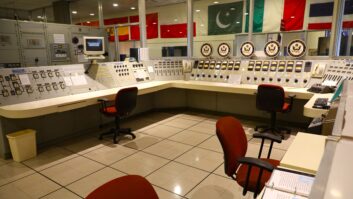DALLAS: A relatively small broadcast owner in Texas is moving aggressively to stake out another business, seeking to position its new in-house technical lab as a resource of RF propagation expertise for itself and other companies. It also hopes to influence RF regulations.
First Broadcasting launched its Spectrum Innovation Lab in December, as reported here. Now it has hired all three employees of a Washington-area consulting company and moved two of them to Dallas.
It describes the growing new lab as “the country’s first technical facility devoted exclusively to the study of digital and analog RF signal propagation including the development of sophisticated software tools to predict and measure such signals.” The goal of the lab is the improvement of radio station coverage and signal quality, according to its mission statement.
The lab is the second RF research facility to be launched in the radio industry in the last few months; NPR Labs was started last fall to research digital signal propagation for noncommercial stations. While the latter is focused on the digital transition mostly for FM noncommercial stations, First Labs says its scope is a little broader, with both analog and digital projects for FM and AM stations.
Costs of the First lab are in excess of $1 million a year. While the lab is focused on radio in 2006, it plans to put together a test plan for TV in 2007, said First Broadcasting President/Vice Chairman Gary Lawrence.
Coverage increases; capital outlays
First has hired the entire Denny & Associates team to work with its lab. Robert Denny Jr., P.E., has been named senior vice president of technology and will direct the company’s technical initiatives, including the lab.
Bert Goldman, who recently formed his own engineering consultancy, remains honorary chair of the lab. The new hires supplement his involvement, said Lawrence.
Growth in staff is a result of new business for the lab, he said. “We are regularly contacted by broadcasters wanting to join us as venture partners. That means we need to continue to add resources.” First is exploring 50 to 100 joint ventures, projects he says entail analyzing virtually every signal in a market.
First has hired Al Kenyon as director of technology and project management division and Tiffany Ligon as technical analyst. Denny will shut down his consulting engineering business, begun in 1994, to join First. Denny and Ligon are moving to Dallas while Kenyon remains in the Washington area.
Kenyon was head of the Broadcast Technical Services Division at Denny and is a former senior vice president at Clear Channel Radio. He will head the new Washington office for First Labs, though lobbying continues to be handled by its Washington law firm Akin Gump. First expects the Washington office to open in June.
Lawrence said Denny, founder and CEO of the company that bore his name, has expertise in signal propagation, facilities design and computer analysis. He described Denny, also the former president of broadcast engineering firm Jules Cohen & Associates, as “one of the industry’s finest technical minds.”
“They’ll be working on analog and digital signal propagation, with a focus on issues related to digital radio,” Lawrence told Radio World.
Business model
First Broadcasting is a partnership of investment fund group Alta Communications and First Broadcasting Investments LP. The broadcast company owns 16 stations, according to its Web site. First’s chairman and CEO is Ronald Unkefer. The lab’s clients will be both First’s stations and others.
The First lab now has approximately 10 scientists and technicians, supported by back-office staff. It uses software created by its employees that projects signal propagation in tandem with field data.
“Currently we do it for ourselves and our joint venture partners,” he said. Other broadcasters who have arranged access to the lab facilities include publicly traded groups, minority broadcasters and small independent owners, he said.
The First lab’s business strategy, when working with stations other than its own, is to enter into confidential joint ventures with broadcasters and other clients. First Broadcasting bears the costs associated with joint ventures, assuming the risk and insulating its partners from financial loss, he said.
Its financial arm assigns a value “per pop,” the population gains that are possible with an improved signal as projected by the lab’s engineering studies.
“We only share in the upside we create if improved ‘pops’ are confirmed,” Lawrence said, in which case First shares in the profits with clients.
Lawrence said has said that among First’s goals are to “effect positive changes in the regulations regarding RF spectrum allocation and management.”
Asked about success stories, First points to the successful completion of a counterproposal to a proposed rulemaking that upgraded an FM station from a Class A to a Class C in a top 5 market. Through the work of the lab, according to the company, the station increased coverage by nearly 2.5 million people, growing value to the owner and improving the number of listeners served.
The company declined to identify specific clients.
